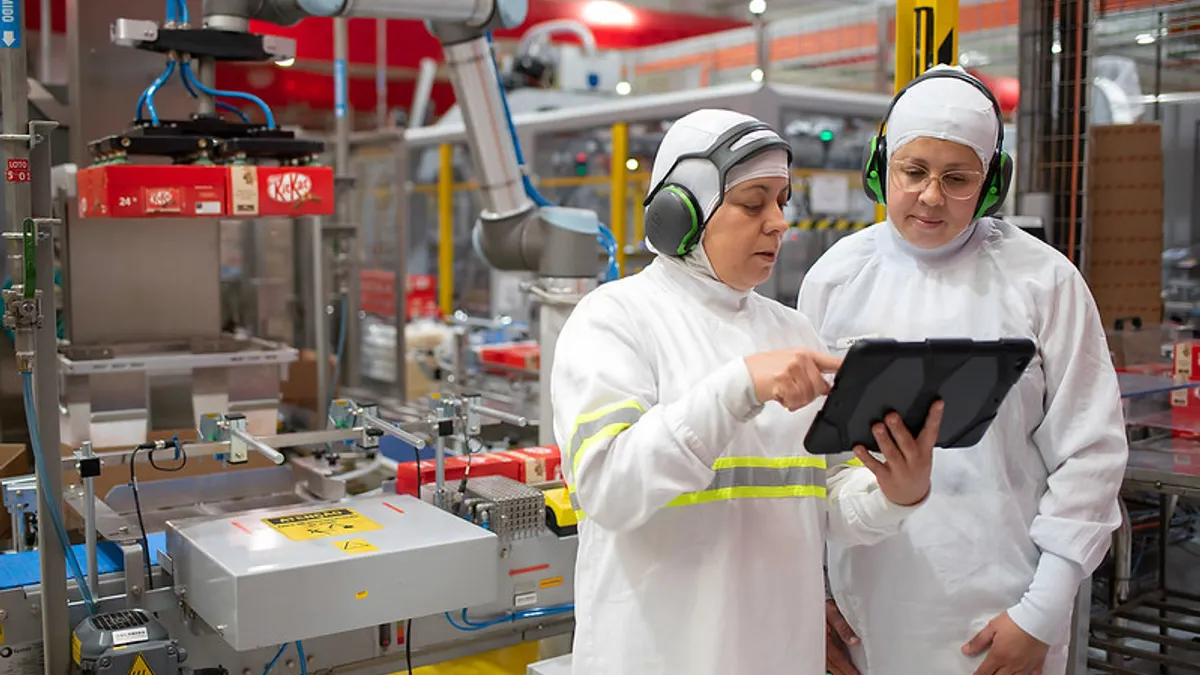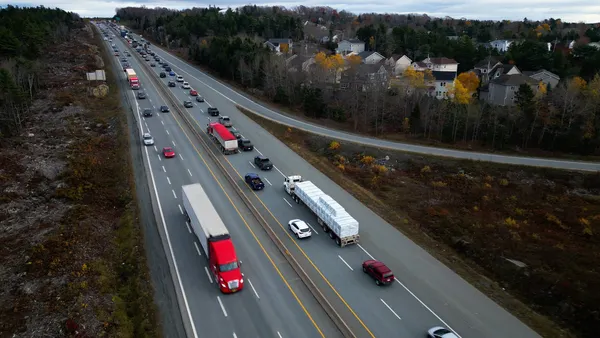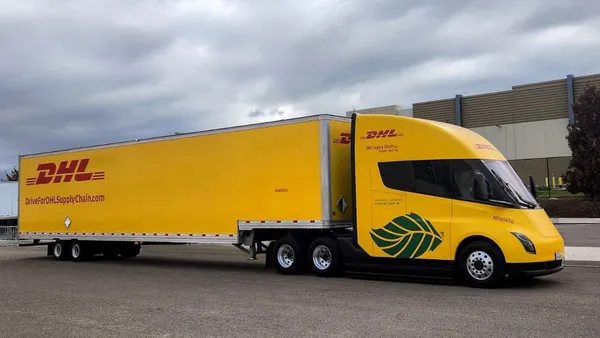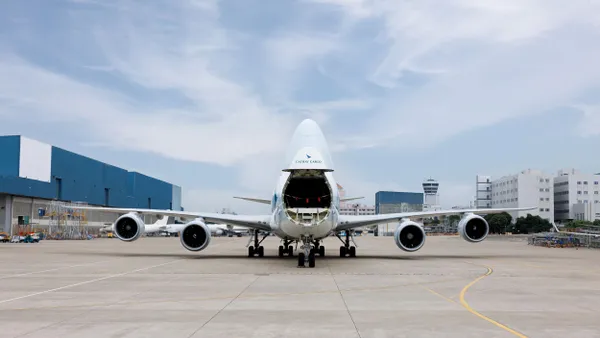Dive Brief:
- The International Transport Forum (ITF) at the Organization for Economic Development last week published a report outlining four steps ports can take to reap the benefits of 22,000 TEU "mega-ships."
- The report studies the case of the Port of Tanjung Priok in Jakarta, Indonesia, which has seen 130% growth in the past seventeen years. As larger ships call, the port expects continued growth, according to Port Technology.
- In order to facilitate growth, the ITF suggests a four-step process: phasing in additional terminal capacity; stimulating regional investment; opening up freight transport to foreign shipping lines; and addressing supply chain bottlenecks.
Dive Insight:
The ITF report may focus on a port in Jakarta, but the lessons may also apply to U.S. ports seeking to adapt to larger ships and retain global competitiveness.
After all, as container ships continue to grow in size, the entire world must transform their ports, whether through increased dredging or expanding regional infrastructure. The effects of larger post-Panamax vessels are beginning to be seen in the U.S., as ports are seeing record volumes continue to grow as larger ships bring in more container traffic at once.
In turn, U.S. ports at large are raising bridges, investing in more rail connections and implementing new technology that could help improve truck and container turn times.
However, the report shows the benefits of mega-ships are not gleaned by just investing in more infrastructure. Larger ships can carry more volume, but such capacity is useless if the economy does not demand more containers. As a result, the ITF recommends ports neither rush into new expansion projects, nor neglect the local economy in favor of their needs.
The recommendations come at a crucial time for U.S. ports. The federal government is currently debating a tax bill, whose revenues (or costs) could affect infrastructure funding in years to come. And President Donald Trump is still looking to pass a $1 trillion infrastructure bill next year, according to Construction Dive.
Yet, delays and uncertainty have spurred state governments and port authorities to take action into their own hands. Federal funding remains necessary, but certain projects cannot wait. If they do, some fear, ports would lose their competitive edge — either to other U.S. ports, or global competitors.
The ITF report, then, is a gentle reminder a rising tide floats all boats, and while port upgrades will remain necessary, such improvements are futile if the economy does not benefit simultaneously.













